What are we looking at here?
Every once in a while we’re going to open up a safe we haven’t been in, in a while, and show you what we find there. If there’s any interest, we’ll do this with stuff on the I’m So Awesome Wall, or in the Room of Oddball Militaria.
But at the moment, we’re looking at something you don’t see every day.
What are we looking at? Answer, and some more photos, after the jump.
About the only thing less common than a Johnson rifle is any group of multiple Johnsons, and that’s what you’re looking at, a pair of Johnsons.
Actually there are rarer guns than the Johnsons. As many as 30,000 were made — as we’ll see, numbers are as much a source of confusion as enlightenment in the Johnson collecting world — The rear gun was one of the first ten thousand, according to its serial number (3110). But Johnson serial numbers are a bit confusing. There are three batches, numbered 0-9999, A0-A9999, and B0-B9999. That’s because these guns were made for the one big contract Johnson Automatics got, to supply 30,000 rifles and some machine guns to the Dutch East Indies government. At least some Johnsons were actually delivered there, but most were still shipboard when the islands fell to the Japanese Empire, and convoys of aid to the beleaguered colony were redirected to Australia; Other guns may have been held up at the factory in Rhode Island.
Both of these, like all extant Johnsons (apart from a handful of prototypes), were part of that Dutch contract. They are chambered for the US Caliber .30 M2 cartridge (.30-06) and have an unusual rotary magazine that is fed by Springfield stripper clips or by individual cartridges.
That flat area you see above, below the bolt, is a door you push in to insert cartridges. They click readily in, or you can zhoonk five in at once with a Springfield stripper. The notch at the rear of the door is where the stripper-clip guide is. (This makes the Johnson a natural for scope mounting, but they were never scoped in military service). Two tactical advantages claimed by the Johnson over its triumphant rival, the Garand, are a couple more rounds in the magazine (10 vs. 8) and the ability to top up the mag after firing a couple of rounds. (If you fire three rounds from an M1 and had a moment’s pause, you can’t just click a new clip in. You must fire the other five or work them out through the action to eject the old clip and make room for the new. This is mostly a factor in house-to-house fighting, that we now call CQB).
The Johnson had, in American style, a very small rear peep sight and a blade front with protective ears. The sight picture is fairly standard (sorry for the busy background). As the guns were all going to the Netherlands East Indies, the sights are calibrated in meters.
There are very few material differences between production Johnsons; there’s much less variation than there is in Garands, or even in carbines, which have a pretty clear early war/late war break in details. The only observable difference between these two rifles, apart from some differences in the weathering or condition they’ve picked up since they were made in 1941, is the height of the front sight blade. We should probably go snap another picture of it, because none of these really shows it, but the gun to the left or rear in these photos (3110) has had the blade filed down very low. The gun in front or right (B0542) has a normal sized blade, and that’s the one we took the “sight picture” shot of.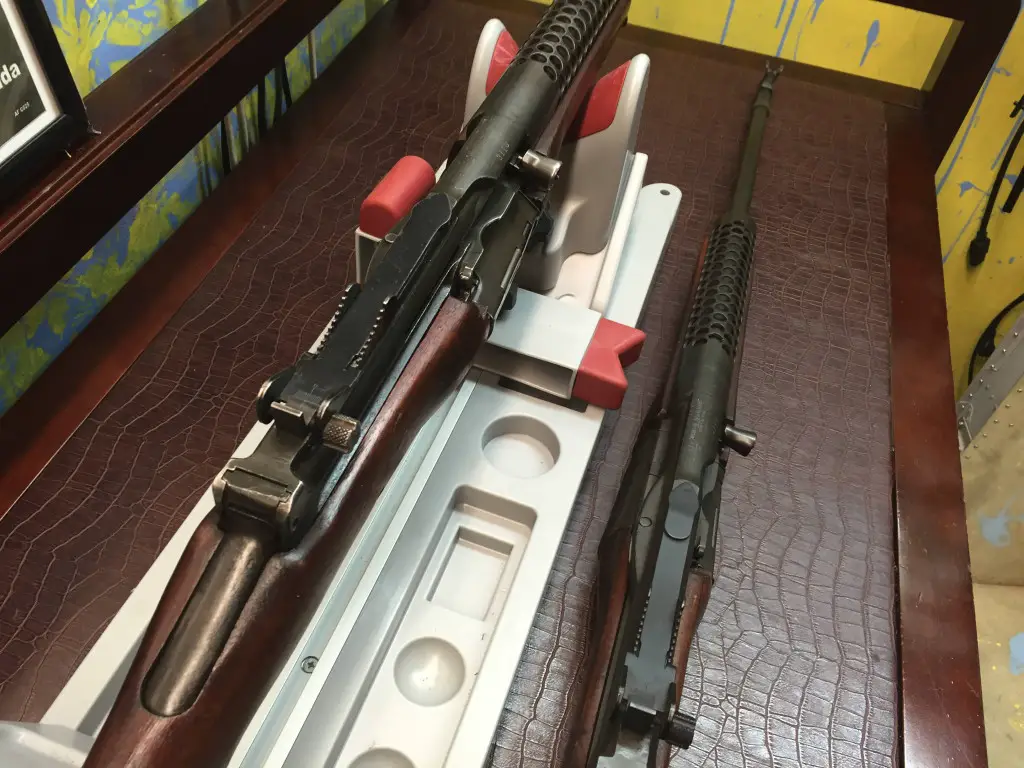
The production numbers for Johnson firearms are hard to pin down. The guns were sysematically marked, but then not assembled in order. It’s entirely possible that this third-batch went out the door before the first-batch rifle did. There were no running changes in production that help one track down when a given gun was made. Workers in the factory painstakingly marked many small parts with a serial number — but then no effort was made to assemble parts of the same number together. No one has ever found a Johnson with numbers-matching parts — they left the factory that way.
It’s also suspected that production did not complete all 30,000 rifles. Bruce Canfield didn’t pin it down, and he and others whose research was incorporated into his Johnson Rifles and Machine Guns can’t give a conclusive number, but 30,000 is not impossible, and certainly works as an upper bound. No estimates exist of survivors, but it’s safe to assume that the guns that reached the NEI were all lost (we know that some did, as there are photos of them, and Thompsons that were in the same shipment, in the hands of Dutch colonial troops). Some that were used by early Marine special operations units were lost, but most wound up warehoused and sold off. There may be 10,000 to over 20,000 Johnson rifles circulating in the US market then, which is nothing compared to the quantity of M1s and Springfields out there, but it still makes the Johnson less absolutely rare than many US martial arms. What makes it valuable is its rarity relative to demand.
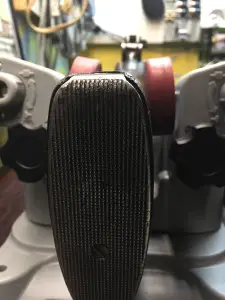
Some Johnsons were sporterized after the war. The sporterization touch was fairly light, removing the front sight and bayonet lug and replacing the stock, and thus it’s largely reversible. One part of the Johnson that was normally discarded in such a conversion is the butt plate, a unique checkered one. Absence of this butt plate suggests a restored sporter.
Johnson bayonets are much rarer than the rifle today, and a very large percentage of those circulating are reproductions. Buyer beware!
Compared to the millions of Garands, Springfields and M1 Carbines produced, that makes the Johnson an object for an advanced collector, or for someone interested in technological and battlefield oddities. The going price of a generic Johnson seems to be around four thousand dollars, give or take. The rare guns with war provenance are worth much more.
Johnson Technology
This probably deserves a post of its own, but the Johnson was unique in that it was a recoil-operated rifle. That probably seemed less exotic in 1941 than it does today, because then most machine guns were recoil-operated. The recoil operation, rotary magazine, and toolless disassembly were all very positive features for the time. The remarkable thing was that the rifle is reliable and accurate, even though it was the first gun designed by Mel Johnson, and its mechanism is little removed from his first, ugly, hunk-of-pipe-looking prototype. Compared to the scores of iterations the Garand design went through over 10 years before adoption and 20 years afterward, the Johnson, the design of which began only five years before the production guns shipped, was the equivalent of a first-pitch home run.
The Johnson in Combat
No records that we know of exist of the Johnson’s combat service in the Netherlands East Indies Army, apart from a few photographs. It is unknown what happened to rifles surrendered to the Japanese, but if any of those rifles exist they passed through three cataclysmic defeats (Dutch by the Japanese, Japanese by the Allies, Dutch again by nationalists).
The US Marines used a test quantity (23 rifles) of Johnsons in the Guadalcanal campaign. These rifles are historically significant; they were the only semi-auto rifles the Marines had in that campaign. Their serial numbers are known and are in Canfield’s book. The rifles were provided by Mel Johnson on what he called a “lend-lease” basis with the idea the paperwork would catch up later; the Corps never did pay him for the guns. One of these is in the collection of the National Museum of the Marine Corps and it is the only Johnson they hold that is indubitably of Marine combat provenance.
The Para-Marines liked the Johnson because the barrel was easily removable and replaceable to make a compact jump package without sacrificing rapid availability on the ground. Johnson developed a special Paratroop rifle that also made dismounting the action from the stock as easy as pushing a button — this development did not proceed beyond prototypes.
Johnson rifles and LMGs were used by other elements as well. The First Special Service Force, the unique Canadian-American airborne unit that fought in Italy, was equipped with Johnson light machine guns, essentially an adaptation of the rifle to MG fire control and a side-mounted box magazine. The FSSF’s Johnsons suffered the same logistical problem as the FSSF’s Canadians: no replacements were available. Johnsons are also supposed to be among the weapons used by the OSS Operational Groups, but evidence is scanty.
The Marines liked the Johnson well enough, but it wasn’t available in the numbers needed for an expanding Corps, and the M1 Garand was. The Navy Department was, then as now, a customer of US Army Ordnance for small arms. US Army Ordnance had legitimate objections to the Johnson, but there was never any chance of them giving a fair shake to a gun that was developed outside their system. In any event, the Garand had been thoroughly debugged and had been in service and in production, although in limited numbers, for five years before the Johnson arose as a challenger. As many firms and designers who have M4 alternatives on the production line or in the engineering lab can attest, it’s not good enough to be “good enough.” A challenger to an established service rifle, which is what the Johnson was, has to be not as good, not just better, but it has to be so much better as to justify the logistics of the changeover: training, doctrine, manuals, maintenance, parts, even something as mundane as rifle racks, accessories, bayonets, ammunition pouches.
In the end that was the epitaph of the Johnson: even if it was better than the M1, it didn’t matter. It wasn’t overwhelmingly better, and so it became a curiosity in collections.

Kevin was a former Special Forces weapons man (MOS 18B, before the 18 series, 11B with Skill Qualification Indicator of S). His focus was on weapons: their history, effects and employment. He started WeaponsMan.com in 2011 and operated it until he passed away in 2017. His work is being preserved here at the request of his family.

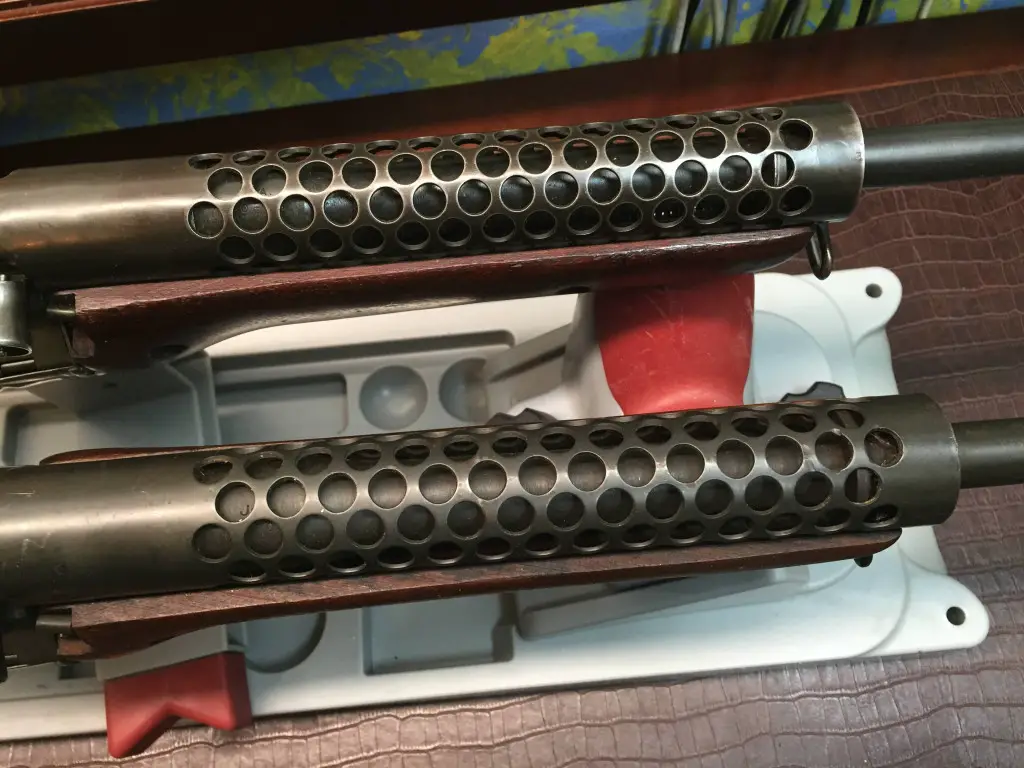
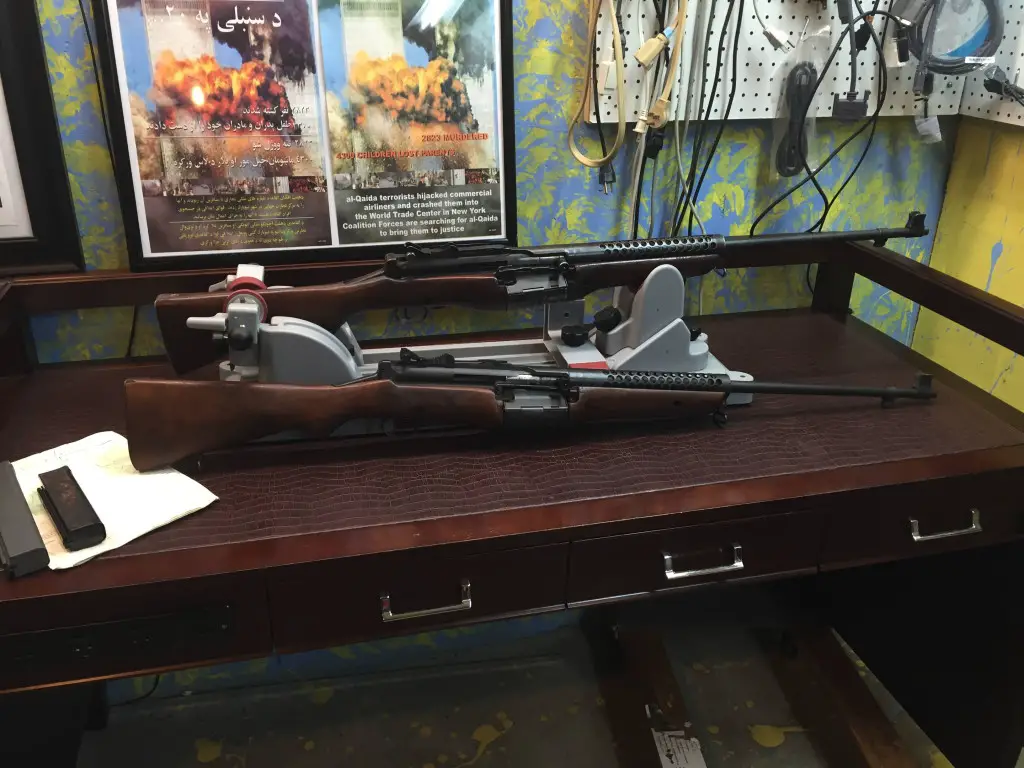
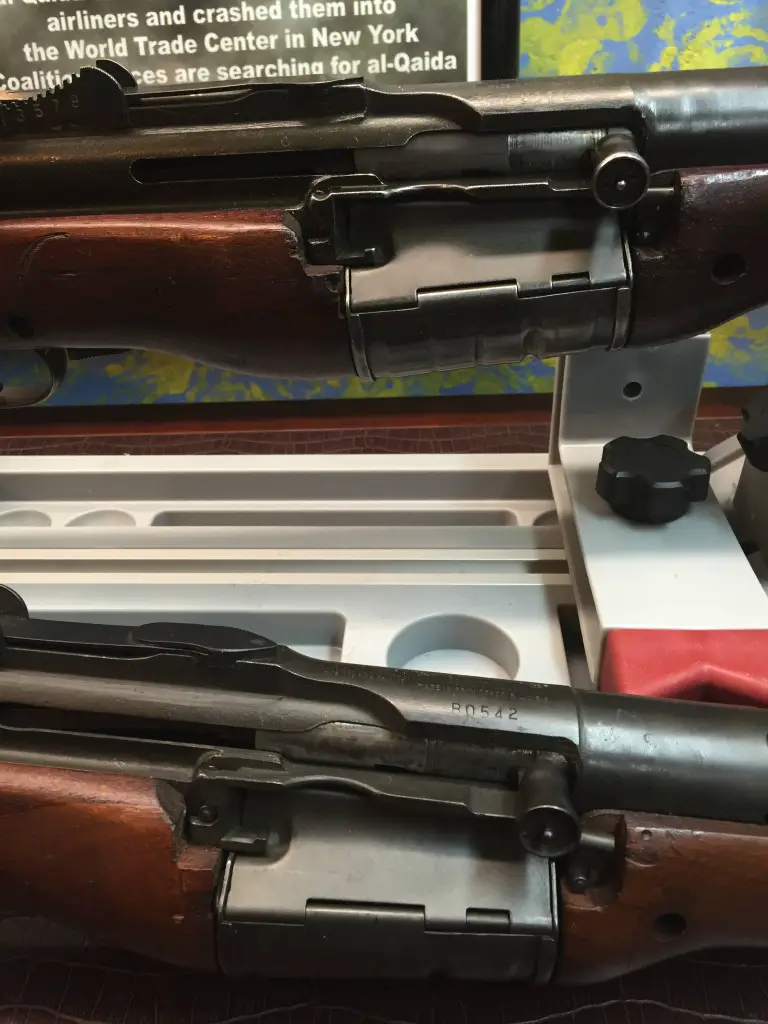
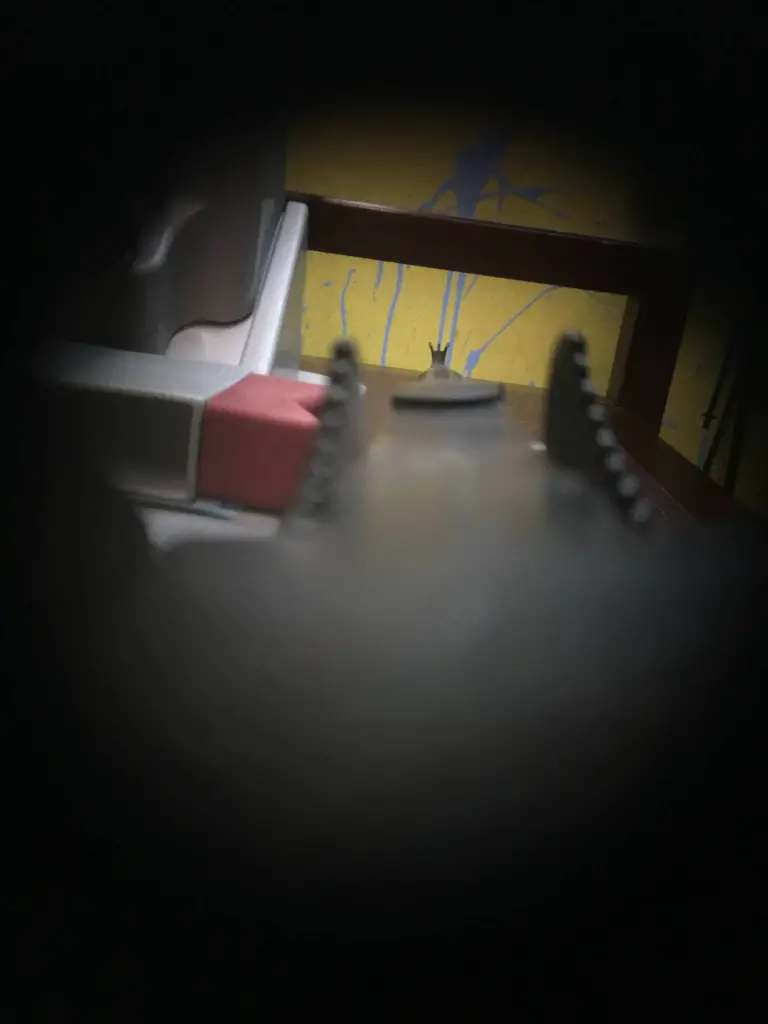
25 thoughts on “Gun ID Question”
Fun trivia. Jack Palance with a scoped Johnson rifle in the 1980 horror movie, Without Warning.
https://www.youtube.com/watch?v=Oo5MvgbKtjo
> unique in that it was a recoil-operated rifle
Not that unique; you could still buy a brand-new Remington Model 81 all the way into the mid-1950s.
Well, a successful recoil-operated military rifle!
Not actualy based on any hard evidence, but maybe the Japanese did ship some Johnsons to mainland China from the captured Dutch stocks. Hard to know. One did actually find its way to continental China and appears in one recent Chinese war flick:
http://www.war-movies.info/warmovies/assembly-1.jpg
It seems odd that they put it in a movie without a good reason as they are really good with the prop’s historic accuracy.
The movie, Assembly, is set in the Chinese Civil War. BTW, the Chinese have been delivering some quite interesting war movies lately. If not for their cinematic value (I don’t quite seem to get the Chinese cinema), they deserve watching for the painstaking detail put in uniforms and weaponry of the era depicted. Lots of Chinese with Stahlhelme and the like. And the combat looks more crude in its realism than in many of the contemporary blockbuster western war movies. By far. Koreans are following closely, too.
A couple years ago we reviewed the Chinese epic 1911, starring Jackie Chan in a full dramatic role, as opposed to his usual martial arts dramedy character. It tanked in the US box office but seemed like a largely realistic portrayal of the life of the Sun Yat-Sen loyalist Chan portrayed, as well as the original Chinese Revolution.
I’d recommend Assembly, City of Life and Death or the Korean movie The Front Line. Would be much interested in reading what you have to say about any of those three.
Will dig the Chan review also and give it a look, and the movie too.
South Korea makes the best war films of any country to date.
71 Into the Fire, Tae Guk GI , as good or better than any US war film. And all stories, asian tragedies
“…that’s what you’re looking at, a pair of Johnsons”.
If I hadn’t just swallowed I would’ve snorted a mouthful of Tullamore Dew over my computer when I read that. 🙂
Keep up the good work sir.
and you’re in what timezone sir?
“You must fire the other five or work them out through the action to eject the old clip and make room for the new. ”
At a considerable risk of bring coals to Newcastle, I think I’d say ‘press the clip latch’ instead of ‘work them out through the action’. The latter seems to imply working the action to cycle each unfired cartridge in turn, like some people do with a lever or pump, vs. merely pressing the clip latch and having the clip and unfired rounds gloriously erupt all over the place :-).
Of course, in a combat situation, ejecting the partial clip means tossing unfired rounds, which is less optimal than topping off, depending on how generous one’s supply situation is.
Obviously I’m rusty on my M1 manual of arms.
I was gonna mention that but…
I’m sure it’s proof of a misspent youth if one sees the lead picture and, without reading any text, says “Golly Dangit, that (Comment about dogs and mangers edited out.) has got himself TWO Johnsons.”. I’ve held one but haven’t fired one. I recall thinking that it was bigger and heavier than it appears to be in most photos.
Now, in Old Codger mode; The M1 rifle does in fact have a clip release lever on the left side of the receiver. I have been told by Even Older Codgers (Korean war vintage.) that you can rotate a partially loaded rifle to starboard, operating the bolt to eject the chambered cartridge, then activating the clip release with your left hand and ending up with a neat pile of spare ammo laying at your feet. I’ve tried it, it can be done. but its harder to do than it sounds.
They so scoped the Johnson! Haven’t you seen the completely accurate WWII documentary about Captain America, Hognose?
I got into the ultimate gun dork show down at a gun show one time because I had the gall to say that I preferred the M-1 Garand over the Johnson. The slightly tubby fellow behind the table and I must have bickered for 15 minutes before I noticed the girlfriend had wandered off.
I took out my Johnson and shot him with it. You did what?
Hot dang it!! I knew it…a couple of Johnson’s. Couldn’t think clearly at first and thought the lay a pair of subs until I looked closer and saw the wood. Shot one once and they are excellent shooters and fun as hell.
It is next to impossible to confess my mad lust for the Johnson without walking into an array of obvious puns, so I might as well do it with my eyes open. Hurr-hurr.
Anyway, one of the highlights of the very first Nat’l Gun Day show I attended in Louisville was the guy who had an entire table full of M1941 rifles bookended by a brace of LMGs on their bipods.
Now you are describing the Johnson I have always wanted to get my hands on, so I guess we’re even in the pun-set-up stakes.
There was a gun show in Houston I attended once with a vendor who had the same setup (could have even been the same vendor, some run the gun show circuit). When I got to the table I blurted out “WOW THAT’S THE MOST JOHNSONS I’VE EVER SEEN IN ONE PLACE” before I realized what a terrible thing I’d just said.
I don’t think I stayed at the gun show very long after that.
“zhoonk” is now my verb for: to use a stripper clip with alacrity.
I knew right away what I was looking at in the picture. The one US Rifle from WWII that I never had any desire to own. Even though they are rare and a bit of an oddity. I think Johnson rifles are just butt-ugly….
By all means continue with this. Really would like to see what else you have hidden.
Back in the 60s a kindly “accumulator” let this kid fire a Johnson. In those days an outfit called Winfield Arms sold Johnsons for the princely sum of $129 or so. Big bucks.
A few years back I got to handle and shoot a Johnson LMG, a pretty rare bird. Fun.
Melvin Johnson was an interesting fellow. His book, “Field Firing” is a good read.
Scuttlebutt has it the Johnson fell out of favor with the Marines due to it’s inability to use a bayonet and shoot at the same time as well as using the bayonet.
***Actually there are rarer guns than the Johnsons. ***
There aren’t many rarer than the Johnson *Daisy Mae* Johnson .30 M2 carbines, built using an assortment of parts from the M1944 automatic rifle /light machine gun and the lighter barrel of the Johnson rifle.
I’m trying to armtwist one American manufacturer into producing a run of the things, his company looking for a semiauto rifle that can easily/quickly handle a caliber change with just a simple barrel swap. The Johnson is about as quick in this respect as one could hope for, and a .30-06/.308 Winchester version under a grand would likely sell like hotcakes. Hey, they’ve brought the FG42 back in limited production!